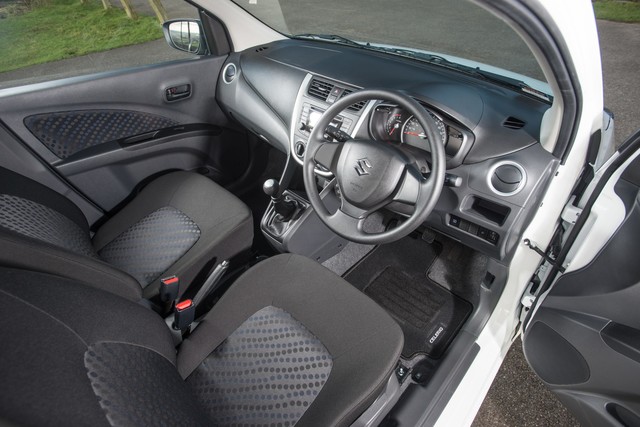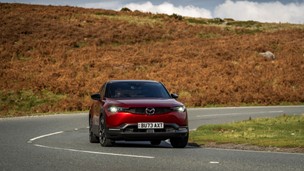When comparing the Suzuki Celerio with its original 1.0-litre petrol engine to the recently launched Dualjet there is, in all honesty, almost no difference between the two versions. The most obvious contrasts are due to Suzuki's possibly temporary policy of making the Dualjet engine available only with the lower SZ3 trim level.
The car being tested here was an SZ4. Therefore it had electric rear windows, front foglights, body-coloured door mirrors, a pocket in the back of the front passenger seat and a chrome accent on the front grille, none of which are standard on the SZ3. SZ4s also have four audio speakers rather than two.
You may say that these are minor matters, and I'd agree with you. More important items, such as air-conditioning, DAB digital radio and Bluetooth connectivity, are fitted to all Celerios sold in the UK.
Also common to all are a 67bhp 1.0-litre three-cylinder petrol engine, modified in the case of the Dualjet to provide better mid-range performance, superior fuel economy and lower CO2 emissions. These are all good things, but the performance difference is undetectable if you leave a 24-hour gap between driving the two cars.
In each case the engine has enough power as the car needs to make decent progress, and is surprisingly quiet in normal driving. When you rev it hard, as you have to do if you want to get anywhere in a hurry, it emits a typical three-cylinder bellow which is amusing rather than irritating.
During my week with the SZ4 I covered over seven hundred miles. Most of them were on motorways, often in bad weather, but there was a good proportion of town and rural motoring in there too. In the circumstances, fuel economy in the mid-50s mpg was quite pleasing. I'd have expected that from a relaxed mid-sized diesel, not a 1.0-litre city car mostly operating outside its comfort zone.

I needed to carry a couple of days' worth of luggage, and in absolute terms it was a tight fit. For a city car, however, the Celerio is quite practical, with a 254-litre boot unmatched by anything else in the class. Rivals do come close, though. The Volkswagen up!, SEAT Mii and Skoda Citigo all provide 251 litres, the Hyundai i10 252 litres.
There's less of a sense of quality than there is in the above models, though the Celerio's major controls, with the possible exception of the gear change, don't feel flimsy. Closing any of the four passenger doors produces a clunk, but not the echoing metallic ring that the same action produces in the Citroen C1, Peugeot 108 or Toyota Aygo.
Driving the Celerio is a surprisingly pleasant experience. A little fidgeting over sudden bumps is its worst feature. It feels secure on motorways, it handles well on back roads and it's very easy to drive in town, where the only major failing is the poor visibility. The turning circle, while not as spectacularly tight as that of the Renault Twingo, is nevertheless usefully small.
The most disappointing aspect of the Celerio is its appearance. It seems too tall for its length and width, though that does bring advantages in terms of the front view and headroom. Headroom both front and rear is decent even if you’re a tall passenger.
There are prettier city cars on the market, but the £8,999 Celerio SZ4 can stand comparison with any of them.



